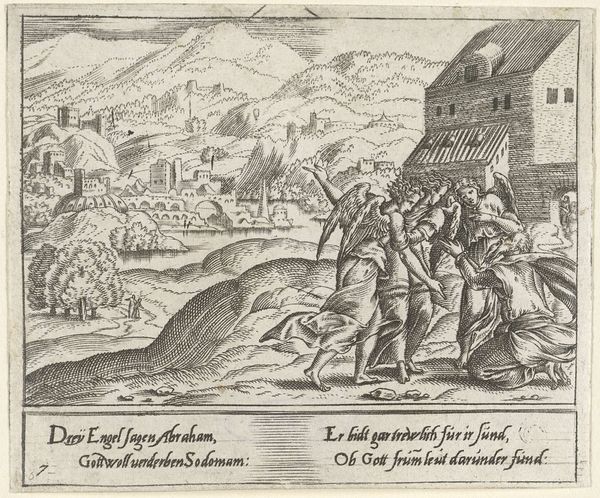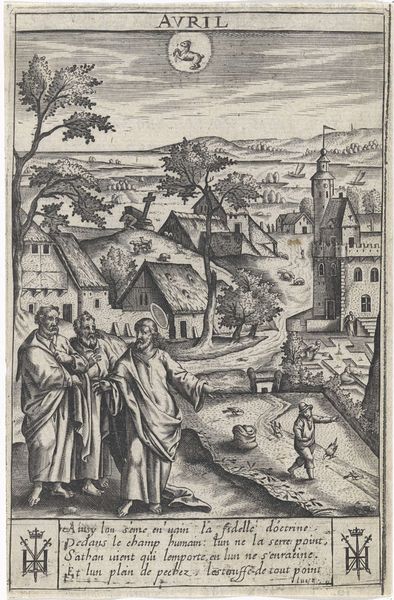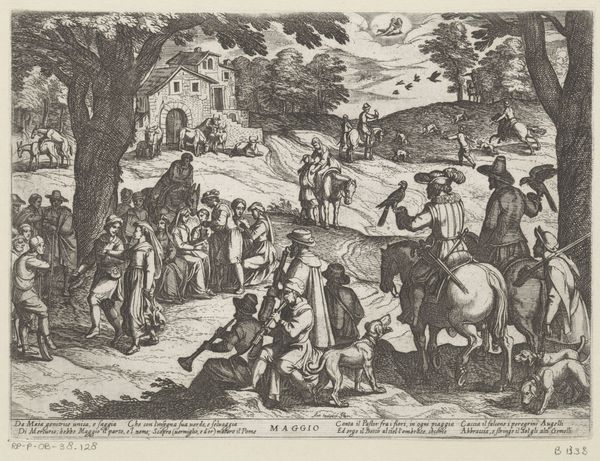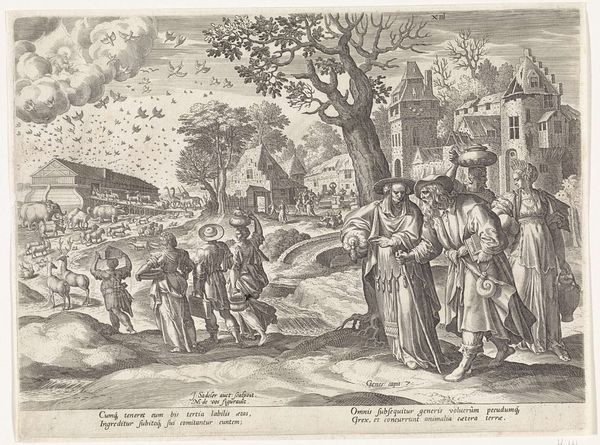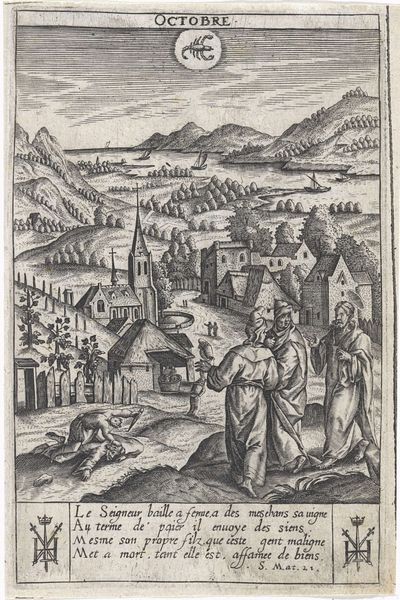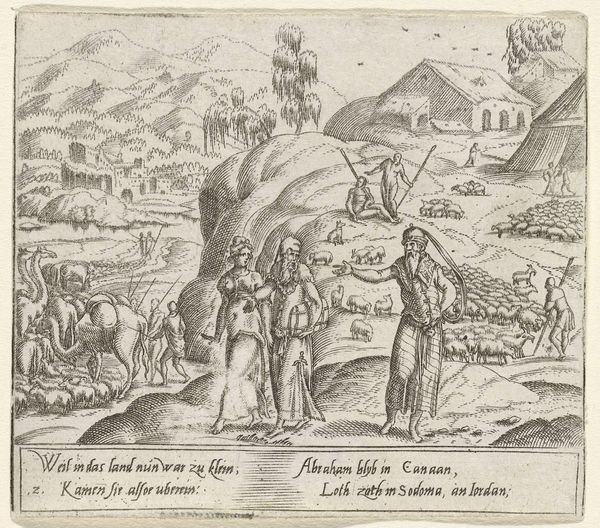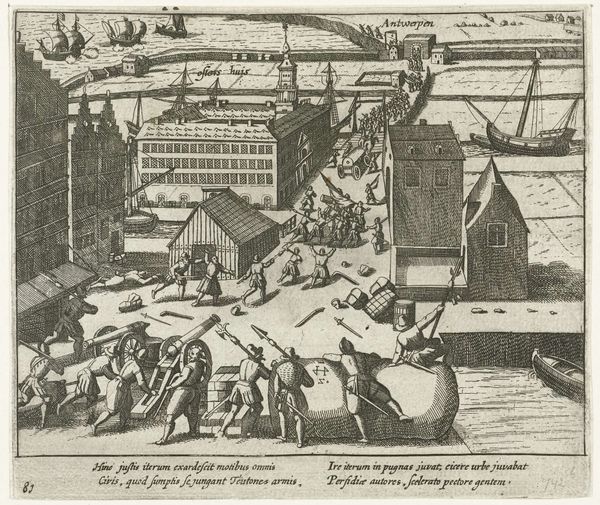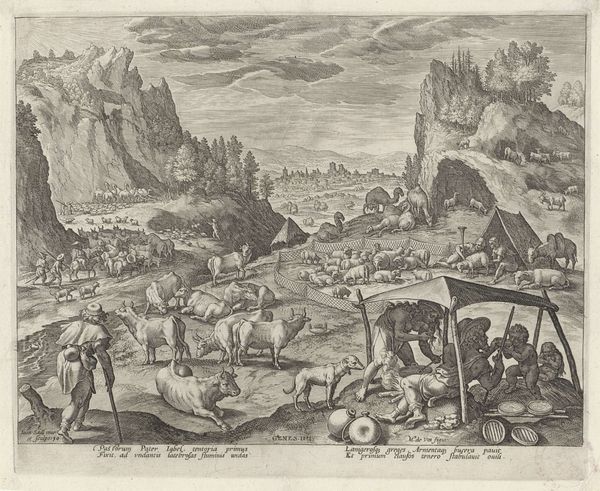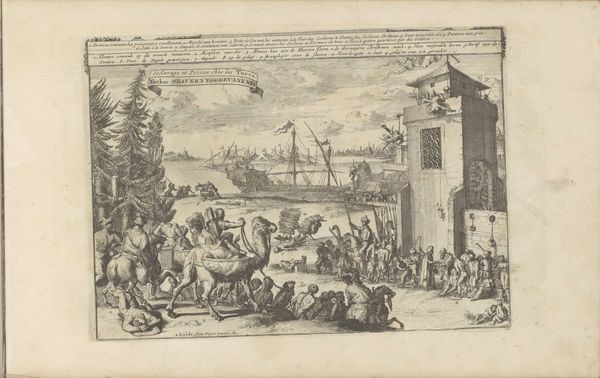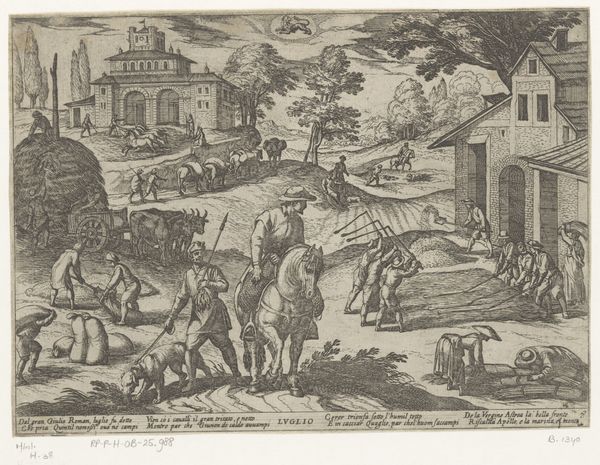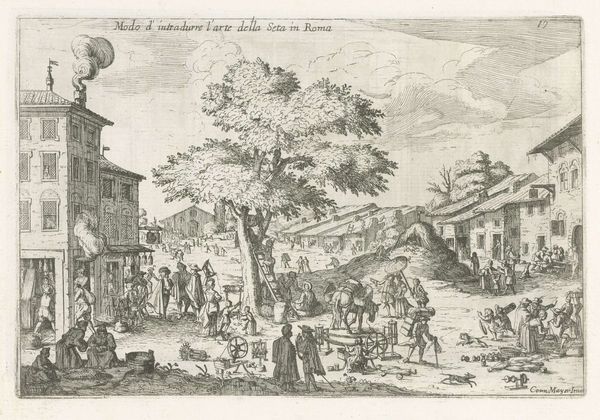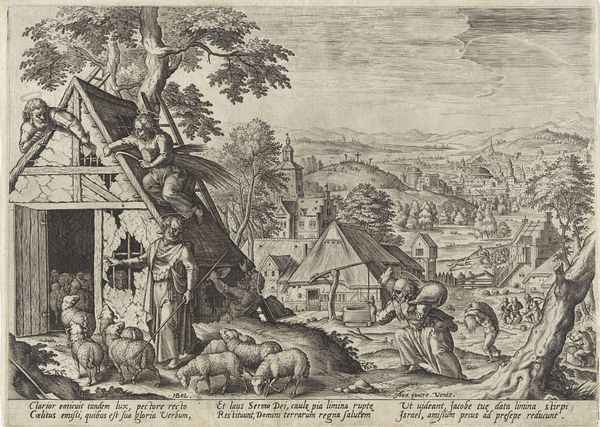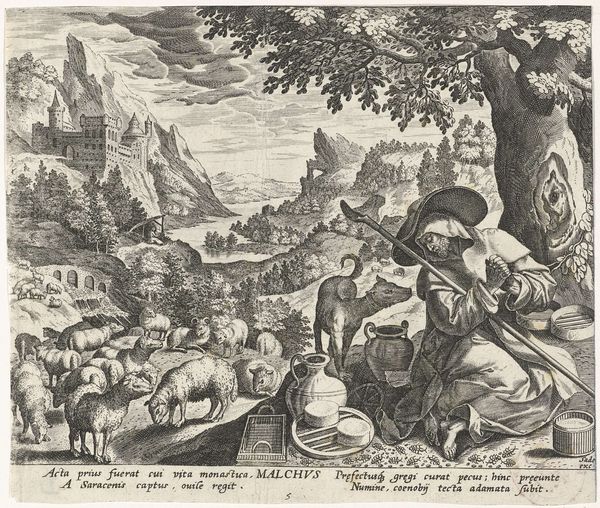
print, etching
#
narrative-art
# print
#
etching
#
landscape
#
figuration
#
history-painting
#
northern-renaissance
Dimensions: height 70 mm, width 84 mm
Copyright: Rijks Museum: Open Domain
Curator: Before us, we have Cornelis Bos’s etching from 1555, “Sara verstoot de zwangere Hagar,” part of the collection at the Rijksmuseum. It depicts a scene from the Old Testament. Editor: It’s quite unsettling, actually. The sharp, wiry lines give the whole scene a tense, almost frantic energy. The figures seem stiff and awkward in the landscape, not at peace at all. Curator: Indeed, the Northern Renaissance style is evident here, and is used as a method to express such emotion. We see this historical moment captured through line and composition. Notice Sara standing almost rigidly, pointing towards Hagar being banished to an unknown future. The use of architectural backdrop gives a sense of established societal rules pressing on their personal dramas. Editor: And yet, there’s a strangeness in how he composes the landscape. The mountain in the background is almost comical, as if mocking the seriousness of the figures’ conflict. It creates an uneasy feeling. Is this the landscape itself commenting on their actions, or simply offering no consolation at all? Curator: I read that more as a representation of humanity's alienation from nature. The figures, stiff against the detailed but unyielding landscape, embody a spiritual dilemma. The print's contrasts—light and shadow, order and chaos—reinforce this. Editor: Perhaps that is the intent. Regardless, I still get the feeling that the mountains find these humans silly. Is that artist intentionally humorous, I wonder? Is it his point of view on social tensions between people? Curator: It's a potent observation. These historical moments of interpersonal struggle play out across eternity; yet it could simply point back at that struggle to see that history will always replay itself in different eras. Editor: I agree entirely. This is truly quite a powerful expression for such an image. It continues to create emotions of conflict when looked upon, time and again. Curator: Indeed. A striking example of narrative-art that transcends the purely representational.
Comments
No comments
Be the first to comment and join the conversation on the ultimate creative platform.
